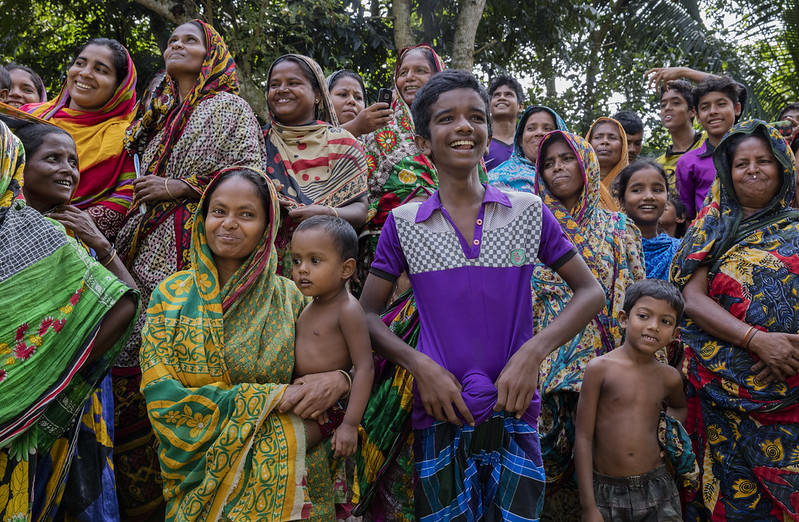Development and validation of a prognostic model for visceral leishmaniasis relapse
Development and validation of a prognostic model for visceral leishmaniasis relapse

In 2005, a WHO-supported Memorandum of Understanding was signed by the governments of Bangladesh, Nepal and India, confirming their commitment to the elimination of visceral leishmaniasis (VL) as a public health problem(1). Subsequent elimination efforts have led to a striking reduction in VL incidence in the Indian subcontinent (ISC), from over 50,000 reported cases in 2007 to 1,069 cases in 2022(2). Recent figures from India, once considered the most endemic country in the world for VL, report under 600 cases in 2023; down from approximately 900 cases in 2022(3). Among factors often cited for the campaign’s success include the lack of an established animal reservoir(4).
As elimination efforts transition to the post-validation phase, there is increasing focus on identifying and reducing infection reservoirs that persist following initial treatment success, including VL relapse and post-kala-azar dermal leishmaniasis (PKDL)(5). VL relapse cases are of particular public health concern due to the potential selection of parasites with increased infectivity(6) and drug resistance mutations(4). Defined as the recurrence of signs and symptoms of infection within 6 months of treatment and initial cure, VL relapse is frequently shown to be the most common cause of treatment failure in the ISC(7,8). Clinical efficacy studies evaluating the current first-line treatment of single-dose liposomal amphotericin B show relapse rates of approximately 3-4%(9), although this is likely an underestimate of the true relapse rate due to relatively healthy patients selected by restrictive inclusion criteria. Furthermore, a significant number of disease recurrences occur after 6-months of treatment(7,10).
Despite the importance of VL relapse both at the individual patient level and in the context of the elimination programme, relatively little is known about relapse risk factors in immunocompetent patients. In a recent update to the WHO Regional Strategic Framework for VL elimination, the diagnosis of relapse cases is recognised as a strategic priority, and that identifying relapse predictors represents a remaining gap in evidence(11).
To address this evidence gap, we intend to leverage individual patient data (IPD) from the IDDO VL data platform of clinical efficacy studies, to develop and internally validate a prognostic model predicting VL relapse in the ISC. We hope such a model can provide a useful bedside tool to identify patients at increased risk of relapse. Through stakeholder engagement, VL management guidelines could utilise such a model to target high-risk patients for intensive post-treatment follow-up.
- Develop a prognostic model predicting relapse for patients diagnosed with visceral leishmaniasis in the Indian subcontinent (ISC: India, Nepal, Bangladesh)
- Perform internal validation of the prognostic model (to account for model overfitting)
- Present the model such that it can be used as a bedside clinical tool (e.g. as a risk score)
We anticipate developing at least two prognostic models: one including parasite smear grade, and one without parasite smear grade. This reflects the fact that many patients in the ISC are diagnosed without microbiological confirmation.
All curated studies shared in the IDDO VL data platform meet the following criteria:
- Studies performed in the Indian subcontinent (India, Nepal, Bangladesh)
- Clinical efficacy studies that prospectively recruited patients with a diagnosis of visceral leishmaniasis (clinical symptoms with either parasitological or serological confirmation)
- Studies with treatment regimen available (at least drug(s) name, dose and duration)
- Studies with patient demographics available (at least age, sex)
- At least 6 months of active patient follow-up following initial treatment
- Studies reporting relapse (defined as new signs and/or symptoms of visceral leishmaniasis within 6 months of treatment completion in patients who achieved initial cure)
- Studies with patient signs and symptoms available (e.g. duration of fever, presence and magnitude of weight loss, splenomegaly, hepatomegaly, fever and other vital signs at baseline)
- Studies with blood and/or urine tests available (e.g. haemoglobin, renal function tests, liver function tests, platelet count, white blood cell count, pregnancy test)
- Microbiological investigations (e.g. splenic smear grade, bone marrow smear grade)
- Presence of a published study protocol and final manuscript
- Information on concomitant illness (e.g. malaria, tuberculosis, HIV)
All studies will be curated to the CDISC SDTM standard(12), adapted by IDDO for visceral leishmaniasis(13).
To meet the first objective, the outcome of relapse and important predictors (as described in the essential and desirable criteria above) will be identified in an exploratory analysis. A sample size calculation will guide the number of predictors such a model can support(14). A full protocol will then be published on PROSPERO.
We aim to account for clustering at the study level by using a random intercept model (multilevel model). Multiple imputations will be used to impute important missing predictors. Established guidelines for the development and validation of prediction models will be adhered to(15,16).
The study group consists of investigators who provide relevant studies for the pooled analysis, and investigators contributing statistical or disease-specific support. Together, the group decides on the inclusion of additional studies, data analysis, and publication plans, in accordance with the IDDO/WWARN Publication Policy(17).
For further information please contact Dr James Wilson (james.wilson@iddo.org).
1. World Health Organization. Regional Strategic Framework for Elimination of Kala-azar from the South-East Asia Region (2005 - 2015). [Internet]. Delhi: WHO Regional Office for South-East Asia; 2005 [cited 2024 Oct 7]. Available from: https://apps.who.int/iris/handle/10665/205825
2. World Health Organization. The Global Health Observatory: Number of cases of visceral leishmaniasis reported. [Internet]. [cited 2024 Oct 7]. Available from: https://www.who.int/data/gho/data/indicators/indicator-details/GHO/number-of-cases-of-visceral-leishmaniasis-reported
3. National Center for Vector Borne Diseases Control. Kala-azar Cases and Deaths in the Country since 2014 [Internet]. [cited 2024 Oct 22]. Available from: https://ncvbdc.mohfw.gov.in/index1.php?lang=1&level=2&sublinkid=5945&lid=3750
4. Singh OP, Singh B, Chakravarty J, Sundar S. Current challenges in treatment options for visceral leishmaniasis in India: a public health perspective. Infect Dis Poverty. 2016 Dec;5(1):19.
5. Hirve S, Boelaert M, Matlashewski G, Mondal D, Arana B, Kroeger A, et al. Transmission Dynamics of Visceral Leishmaniasis in the Indian Subcontinent – A Systematic Literature Review. Chatterjee M, editor. PLoS Negl Trop Dis. 2016 Aug 4;10(8):e0004896.
6. Rai K, Cuypers B, Bhattarai NR, Uranw S, Berg M, Ostyn B, et al. Relapse after treatment with miltefosine for visceral leishmaniasis is associated with increased infectivity of the infecting Leishmania donovani strain. mBio. 2013 Oct 8;4(5):e00611-00613.
7. Goyal V, Das VNR, Singh SN, Singh RS, Pandey K, Verma N, et al. Long-term incidence of relapse and post-kala-azar dermal leishmaniasis after three different visceral leishmaniasis treatment regimens in Bihar, India. Werneck GL, editor. PLoS Negl Trop Dis. 2020 Jul 20;14(7):e0008429.
8. World Health Organization. Report of Meeting of the Regional Technical Advisory Group (RTAG) on visceral leishmaniasis and the national visceral leishmaniasis programme managers of endemic member states. [Internet]. Regional Office for South-East Asia; 2020 [cited 2024 Oct 7]. Available from: https://iris.who.int/handle/10665/340612
9. Chhajed R, Dahal P, Singh-Phulgenda S, Brack M, Naylor C, Sundar S, et al. Estimating the proportion of relapse following treatment of Visceral Leishmaniasis: meta-analysis using Infectious Diseases Data Observatory (IDDO) systematic review. The Lancet Regional Health - Southeast Asia. 2024 Mar;22:100317.
10. Burza S, Sinha PK, Mahajan R, Lima MA, Mitra G, Verma N, et al. Risk factors for visceral leishmaniasis relapse in immunocompetent patients following treatment with 20 mg/kg liposomal amphotericin B (Ambisome) in Bihar, India. PLoS Negl Trop Dis. 2014;8(1):e2536.
11. World Health Organization. Regional strategic framework for accelerating and sustaining elimination of kala-azar in the South-East Asia Region, 2022-2026 [Internet]. New Delhi: World Health Organization, South-East Asian Region; 2022. Available from: https://iris.who.int/bitstream/handle/10665/361887/9789290209812-eng.pdf
12. Clinical Data Interchange Standards Consortium (CDISC). Study Data Tabulation Model (SDTM) [Internet]. [cited 2024 Oct 8]. Available from: https://www.cdisc.org/standards/foundational/sdtm
13. Infectious Diseases Data Observatory (IDDO). New global collaboration developing standards for standardised data collection across the VL research community [Internet]. 2020 [cited 2024 Oct 8]. Available from: https://www.iddo.org/news/new-global-collaboration-developing-standards-standardised-data-collection-across-vl-research
14. Riley RD, Snell KI, Ensor J, Burke DL, Harrell Jr FE, Moons KG, et al. Minimum sample size for developing a multivariable prediction model: PART II ‐ binary and time‐to‐event outcomes. Statistics in Medicine. 2019 Mar 30;38(7):1276–96.
15. Collins GS, Reitsma JB, Altman DG, Moons KGM. Transparent Reporting of a Multivariable Prediction Model for Individual Prognosis or Diagnosis (TRIPOD): The TRIPOD Statement. European Urology. 2015 Jun;67(6):1142–51.
16. Debray TPA, Collins GS, Riley RD, Snell KIE, Van Calster B, Reitsma JB, et al. Transparent reporting of multivariable prediction models developed or validated using clustered data (TRIPOD-Cluster): explanation and elaboration. BMJ. 2023 Feb 7;e071058.
17. Infectious Diseases Data Observatory (IDDO). IDDO/WWARN Policy on Data Use, Publication and Credit [Internet]. [cited 2024 Oct 8]. Available from: https://www.iddo.org/sites/default/files/2024-10/IDDO%20publication%20policy%20final2.pdf






